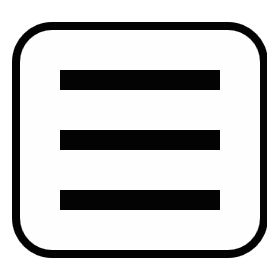Any teaching process is influenced by a variety of factors such as individual experiences, educational backgrounds, cultural backgrounds, teaching style and communication preferences.
Teaching professionals communicate a variety of details, information, and instructions to students. They are also responsible for measuring students’ learning progress. This requires an on-going communication exchange, as a two-way channel is essential to a successful teaching process.
If you are a teacher with a student who is deaf or hard of hearing in your class, how do you communicate with that student? How might the teaching process be influenced by a teacher/student relationship where two different languages are used and two different cultural experiences intersect?
Deaf and Hard of Hearing Services offers the following information to provide instructors with basic information resources related to working with students who are deaf or hard of hearing in the classroom.
COMMUNICATION STYLES
There is wide variation in the communication styles and preferences of people who are deaf or hard of hearing. A common misconception is that all individuals communicate in the same way! NOT all people who are deaf or hard of hearing can read lips. It is important to understand that, in fact, people who are deaf or hard of hearing may use one of three different modes of manual communication or may choose to use their voice and read lips. Each person may or may not use a hearing aid. Also they may or may not have some degree of residual hearing that allows them to hear different kinds of sounds (e.g., certain frequencies of the human voice or other noises). Consequently, each relationship with a student who is deaf or hard of hearing will be unique and may require different techniques for communication.
TYPES OF COMMUNICATION ACCESS
There are various ways that communication between a hearing and a person who is deaf or hard of hearing can be accomplished: use of the voice, speech reading (also called lip reading), written language, sign language interpreters, and/or assistive listening devices (such as hearing aids and FM equipment). In the classroom, any one of these methods or a combination of methods may be used to achieve accessible communication.
It is important to recognize that if English is used in any form, whether it is spoken, written, or for speech reading, the person who is deaf or hard of hearing must be fluent in English. It is often thought that sign language is a manual form of English, however, this is not necessarily the case. American Sign Language (ASL) is a distinct language in its own right and as with any language, spoken or manual, it has its own grammar, syntax and cultural nuances. A manually coded form of English, referred to as Signed English or Manually Coded English, follows most grammatical rules of English, however, it is very different from ASL.
For a student whose first language is ASL and is not fluent in English as a second language, the methods of communication that rely upon English fluency, such as speech reading, written English, or spoken English, will not be effective for ensuring communication. Native ASL users primarily use sign language interpreters for communicating with non-signers. Depending on their fluency in English they may also use notetakers and other techniques that rely on English fluency.
Because sign language in all of its forms (i.e., ASL, Signed English, Etc.) is the primary language of most people who are Deaf or hard of hearing, sign language interpreters are most often used in a classroom setting, with or without other accommodations.
SIGN LANGUAGE INTERPRETERS
Interpreters are bilingually trained professionals whose role is to facilitate communication between people who do not share the same language, culture, or way of communicating. To attain the requisite skills to do this, years of practice and specialized schooling are required. Sign language interpreters are also bound by a strict code of ethical conduct as established by the National Registry of Interpreters for the Deaf. This Code of Professional Conduct establishes standards for maintaining confidentiality, impartiality and professionalism by the interpreter.
THE ROLE OF THE INTERPRETER/SERVICE PROVIDER
It is virtually impossible to be both an active participant and a neutral communication bridge between people who are hearing and deaf or hard of hearing. For this reason, it is not within the realm of the interpreter’s role to advise, edit, advocate, teach, or participate while in the interpreting situation. The interpreter must faithfully transmit the spirit and content of any speaker or signer, leaving the right to control the communication interaction with the deaf, hard of hearing and hearing consumers. This should be expected from all service providers.
CONTACTING A DEAF OR HARD OF HEARING STUDENT
If you need to contact a student who is deaf or hard of hearing off-campus, ask student for contact information directly (pager address, email, video phone number).
ADDITIONAL RESOURCES
Deaf and Hard of Hearing Services can provide additional materials with details on a wide range of topics. If you would like more information, contact: Deaf and Hard of Hearing Services
Email: deafservices@necc.mass.edu
Phone: 978-241-7045 (VP/V))

